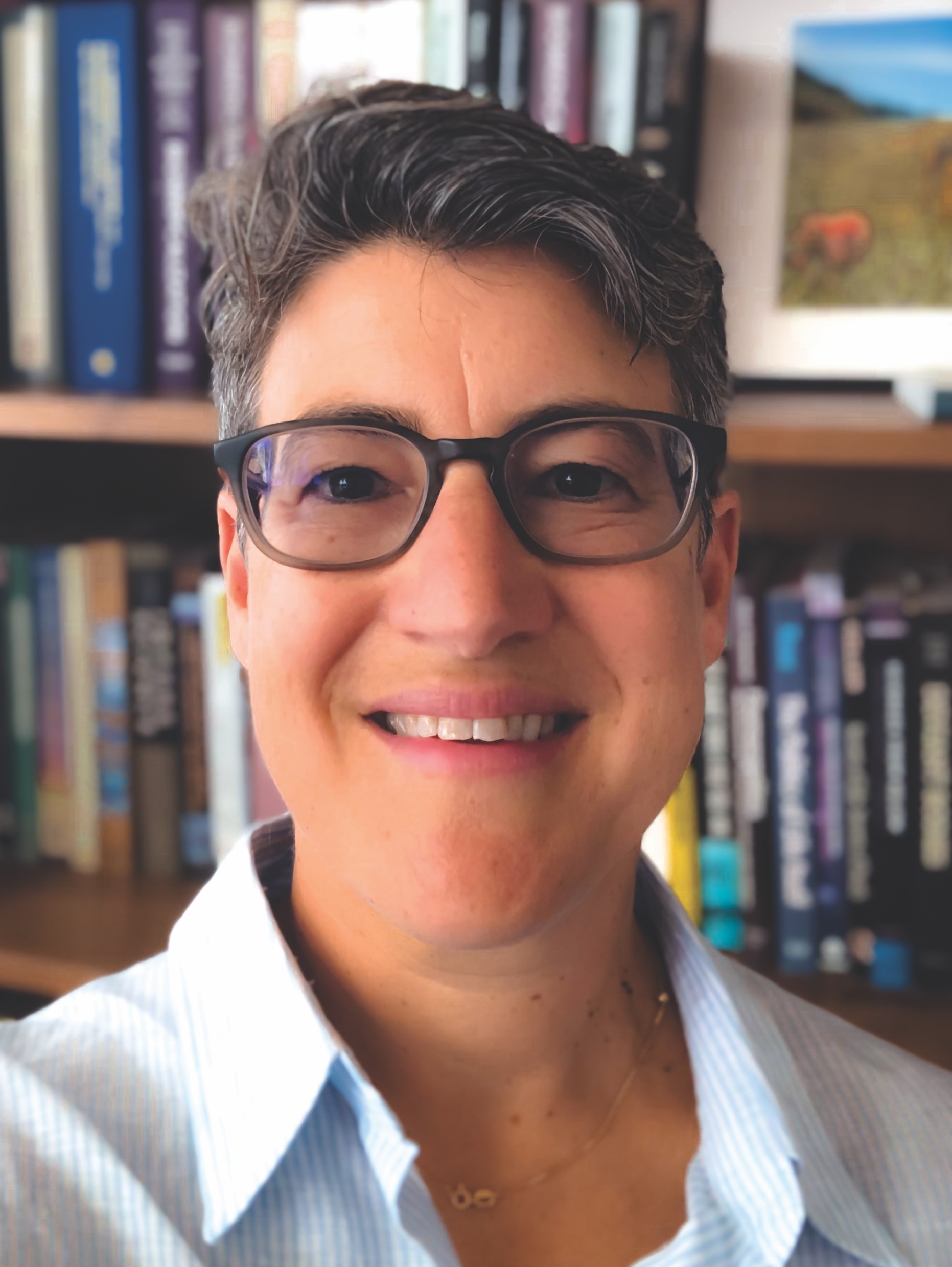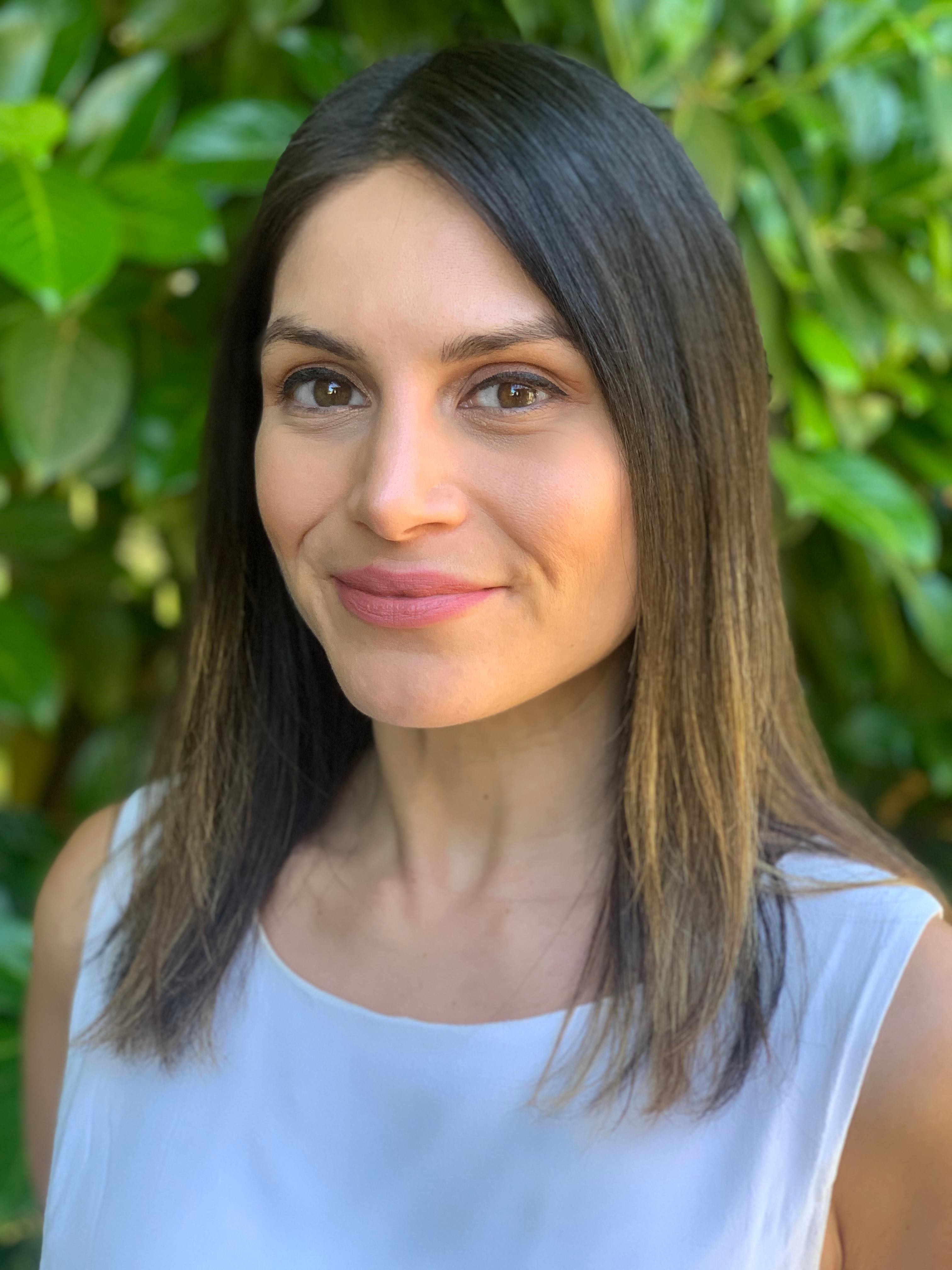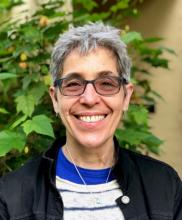Racial/ethnic disparities in childhood obesity: the role of school segregation
Authors: Mahmood, Nuha, MS; Sanchez-Vaznaugh, Emma, ScD; Matsuzaki, Mika, PhD; Sánchez, Brisa, PhD
Objective: Recent studies have observed that racial or ethnic adult health disparities revealed in national data dissipate in racially integrated communities, supporting the theory that “place, not race” shapes the nature and magnitude of racial/ethnic health disparities. We test this theory among children.
Methods: In 2020, we estimated racial/ethnic childhood obesity disparities within integrated schools and between segregated schools, using statewide cross-sectional data collected in 2019 on 5th, 7th, and 9th grade students from California public schools.
Results: School segregation accounted for a large part of the obesity disparities between White children and children of color (Latinos, Blacks and Filipinos). In racially integrated schools, obesity disparities were much smaller than those in state-wide data, whereas racial or ethnic childhood obesity disparities were larger when comparing children in majority White schools to those attending schools with majority enrollment of children of color, except for Asians, who generally had lower obesity rates than their White peers.
Conclusions: School-level racial segregation is a salient contributor to racial/ethnic childhood obesity disparities. Reducing obesity disparities may be particularly effective if place-level interventions target socioeconomically disadvantaged integrated schools and segregated schools attended primarily by children of color.


Sleep debt: the impact of weekday sleep deprivation on cardiovascular health in older women
Authors: Tomás Cabeza de Baca, Koharu Loulou Chayama, Susan Redline, Natalie Slopen, Fumika Matsushita, Aric A. Prather, David R. Williams, Julie E. Buring, Alan M. Zaslavsky and Michelle A. Albert
Study Objectives: Short sleep duration is associated with increased cardiovascular disease (CVD) risk. However, it is uncertain whether sleep debt, a measure of sleep deficiency during the week compared to the weekend, confers increased cardiovascular risk. Because sleep disturbances increase with age particularly in women, we examined the relationship between sleep debt and ideal cardiovascular health (ICH) in older women.
Methods: Sleep debt is defined as the difference between self-reported total weekday and weekend sleep hours of at least 2 hours among women without apparent CVD and cancer participating in the Women’s Health Stress Study follow-up cohort of female health professionals (N = 22 082). The ICH consisted of seven health factors and behaviors as defined by the American Heart Association Strategic 2020 goals including body mass index, smoking, physical activity, diet, blood pressure, total cholesterol, and glucose.
Results: Mean age was 72.1 ± 6.0 years. Compared to women with no sleep debt, women with sleep debt were more likely to be obese and have hypertension (pall < .05). Linear regression models adjusted for age and race/ethnicity revealed that sleep debt was significantly associated with poorer ICH (B = –0.13 [95% CI = –0.18 to –0.08]). The relationship was attenuated but remained significant after adjustment for education, income, depression/anxiety, cumulative stress, and snoring.
Conclusion: Sleep debt was associated with poorer ICH, despite taking into account socioeconomic status and psychosocial factors. These results suggest that weekly sleep duration variation, possibly leading to circadian misalignment, may be associated with cardiovascular risk in older women.
Queering reproduction in transnational bio-economies
Author: Laura Mamo
Abstract: In this commentary, I consider how scholars, practitioners and those seeking to have babies via assisted reproductive technology (ART) might be accountable to 21st century family-making in ways that attend to reproductive stratifications (the uneven support for people to conceive and raise children), and yet refuse to renaturalize or valorize certain forms of reproduction or reproduction by certain categories of persons [e.g. lesbian, gay, bisexual, transgender and gender queer (LGBTQ)/non-normative people]. I offer a queer reproductive justice (QRJ) framework that joins the shift in feminist politics from advocating safe, affordable and equitable access to ART to imagining other ways of doing and making kinship, care and children. QRJ suggests that kinship can be queered via choice and ART without succumbing to either a binary choice between queerness and normativity or without being unaccountable to oneself, others within systems of power, and the very systems that make our choices legible. QRJ neither marginalizes nor valorizes LGBTQ desires and practices for inclusion in reproductive biomedicine, and refuses to renaturalize or valorize certain forms of reproduction over others. Instead, QRJ posits queer kinship as a social formation that variously challenges and reinforces the values of neoliberal, future-oriented reproductivity and the global biological market economies in which these increasingly take shape. QRJ encourages kinship forms that include multiple possibilities for intimacies, belonging and making kin.
For more of Laura Mamo's work check out these links:
- Sexualizing Cancer by Laura Mamo
- Human Papillomavirus self-sampling: A tool in cancer prevention and sexual health promotion by Laura Mamo, Ashley Peréz, Lucy Rios
- The imaginary precision of public health by Laura Mamo and Martha Kenney
- California Cities’ Emergency Housing Policies during COVID-19: Where is Equity? by Dr. Jennifer Shea and Dr. Laura Mamo
Working Paper 2022-2
LinkedIn Blog Post
Policy Brief WP 2022-2


Ecological and political economy lenses for school health education: a critical pedagogy shift
Authors - Marty Martinson & John P. Elia
Purpose – The purpose of this paper is to critically examine school health education in the USA and present alternative approaches for more critical and comprehensive health education.
Design/methodology/approach – An ecological model framework is used to identify the limitations and opportunities for improvement in school health education in the USA. An argument is made for school health education that embraces ecological approaches, political economy theory, and critical pedagogies.
Findings – US schools have been tasked with providing health education that is primarily rooted in individualistic approaches. Often missing from this education is recognition of the social and structural determinants of health that greatly influence one’s ability to practice the health behaviors promoted in schools. This raises pedagogical and ethical concerns, which can be addressed by teaching health education that is grounded in ecological and political economy understandings of health and in critical pedagogies that allow students to more comprehensively and accurately understand health, how their worlds influence health, and their agency within those worlds.
Practical implications – This paper offers justification for a critical model of school health education and for the professional preparation of school health educators that is grounded in critical pedagogy and ecological approaches.
Originality/value – This work complements other research on critical health education by adding explicit integration of the ecological model and the political economy theory within critical pedagogies.
For more of Marty Martinson's work, check out these links:
Indoor Air Quality Intervention in Schools: Effectiveness of a Portable HEPA Filter Deployment in Five Schools Impacted by Roadway and Aircraft Pollution Sources
Authors: Nancy Carmona , Edmund Seto, Timothy R. Gould, Everetta Rasyid, Jeffry H. Shirai,
BJ Cummings, Lisa Hayward, Timothy V. Larson and Elena Austin
Abstract: The Healthy Air, Healthy Schools Study was established to better understand the impact of ultrafine particles (UFPs) on indoor air quality in communities surrounding Seattle-Tacoma (Sea-Tac) International Airport. The study team took multi pollutant measurements of indoor and outdoor air pollution at five participating school locations to estimate infiltration indoors. The schools participating in this project were located within a 7-mile radius of Sea-Tac International Airport and within 0.5 mile of an active flight path. Based on experimental measures in an unoccupied classroom, infiltration rates of (a) UFPs of aircraft origin, (b) UFPs of traffic origin, and (c) wildfire smoke or other outdoor pollutants were characterized before and after the introduction of a portable high efficiency particulate air (HEPA) filter intervention. The portable HEPA cleaners were an effective short-term intervention to improve the air quality in classroom environments, reducing the UFP count concentration from one-half to approximately one-tenth of that measured outside. This study is unique in focusing on UFPs in schools and demonstrating that UFPs measured in classroom spaces are primarily of outdoor origin. Although existing research suggests that reducing particulate matter in homes can significantly improve asthma outcomes, further investigation is necessary to establish the benefits to student health and academic performance of reducing UFP exposures in schools.
For more of Nancy Carmona's work, check out these links:


Documentary - "Sally"
Deborah Craig - Producer/Director
Jörg Fockele - Producer
Ondine Carey - Producer
Sally Gearhart was a charismatic radical lesbian activist, author, and academic who spearheaded the 1970s and 80s lesbian feminist movement yet has been largely forgotten. But the film SALLY is not just a straightforward biography of this “hidden figure” deserving more recognition. It also shows the symbiotic relationship between spokeswomen like Sally and movements for social change, which are necessarily collective. And it highlights Sally’s captivating iconoclasm and contradictions: SALLY is both a wild lesbian safari and a timely and deeply moving meditation on the tensions inherent in revolutionary movements: ideological principles versus human realities, separatism versus mainstreaming, and throwing down the gauntlet versus reaching across the aisle. Ultimately, Sally and compatriots’ key contributions can help guide our current, urgent battles for social justice.

Association between COVID-19 mitigation strategies and the number of close contacts reported per case at the University of California San Diego
Authors: Rochelle-Jan Reyes
Abstract: Case investigation and contact tracing (CICT) is a strategy for preventing transmission of infectious diseases, deployed during the COVID-19 pandemic, to identify individuals before becoming symptomatic and/or infectious so they could test and quarantine in order to break chains of transmission. Since May 11, 2020, the UC San Diego Return to Learn program conducted CICT for UCSD students, faculty, and staff. Data collected through contact tracing efforts provides an estimate for adherence to social distancing efforts. Our study aimed to identify the number of close contacts per case as well as factors associated with changes in the number of close contacts. Using available data, cases investigated between July 2020 and April 2021, we examined case characteristics and determined the number of close contacts reported by cases over time. Trends in the number of contacts per case over time were examined using linear regression. Of the 968 cases investigated during this period, 33.9% were White/Middle Eastern, 51.1% were female, and 63.2% were 18-29 years old. Cases were stratified based on university affiliation, in which 56.4% were students (including student employees) and 43.6% were employees of UC San Diego. Findings indicated that the number of close contacts per case had a statistically significant association with age group and student status. Analyses showed an increase in the mean number of close contacts per case over time. Furthermore, we observed that the number of contacts per case increased after stay-at-home orders ended in San Diego county (p<0.001), but did not decrease after business closures and mask mandates were implemented (p=0.76). These findings suggest that changes in time and mitigation protocols (i.e., quarantine) can impact social distancing adherence by proxy of close contacts, which provide insights for future outbreak mitigation efforts and policy planning.
Health Implications of Racialized State Violence Against South Asians in the USA
Authors: Supriya Misra, Nehanda Tankasala, Yousra Yusuf, Trushna Rao, Anto Paul, Samira Khan, Shipra Singh
Abstract: South Asians, one of the fastest growing ethnic groups in the USA today, trace their roots to countries in the Indian subcontinent (e.g., Bangladesh, Bhutan, India, the Maldives, Nepal, Pakistan, Sri Lanka) and its global diaspora. With a wide range of cultural, religious, and linguistic diversity, as well as immigration experiences and inequality, South Asians have experienced racialized violence and discrimination since first arriving in the USA in the 1700s. Following September 11, 2001, South Asians and other groups racialized as “Brown,” including Muslim, Sikh, Middle Eastern, and Arab Americans, have experienced a marked increase in state violence, including racist laws, policies, and immigration enforcement. Despite abundant evidence of the adverse effects of violence on mental and physical health, there is limited research examining the impact of this racialized state violence on the health of South Asians in the USA. We summarize and synthesize existing peer-reviewed and gray literature on the prevalence and types of violence experienced by South Asians in the USA and enumerate their potential detrimental health impacts. We highlight the paucity of public health data and propose a conceptual framework describing how racialized violence and hate have significant implications for health among South Asians in the USA. Ultimately, these findings illuminate the need for change at the highest levels of governance to mitigate and resist hate violence, including through political participation and inclusion and equitable allocation of social and economic resources, to improve the health of South Asians in the USA.

The Social Justice Syllabus Design Tool: A First Step in Doing Social Justice Pedagogy
Authors: Sherria D. Taylor, Maria J. Veri, Michele Eliason, Jocelyn Clare R. Hermoso, Nicole D. Bolter, Juliana E.Van Olphen
Abstract: Despite increased attention on social justice in higher education, underrepresented students often experience the classroom as unwelcoming and even hostile. Although theoretical and pedagogical research exists, what appears to be lacking are examples of concrete social justice pedagogy strategies that can be implemented in the classroom setting. This article describes the Social Justice Syllabus Design Tool (SJSDT) created to facilitate a greater emphasis on social justice in courses. Using an integrative framework and highlighting the focus areas of relationship, community, and process, the SJSDT offers a systematic approach to course re-design by which instructors canassess their classroom environment and course content. A syllabus that signals belongingness, growth mindset, communal goals, clear and positive expectations, and success-orientation assists in setting a welcoming tone that leads to greater student achievement and engagement. Such a syllabus may also help reduce the potential for triggering stereotype threat or other forms of alienation that affect student success among women and students of color in STEM programs.Feedback received from faculty who utilized the tool to revise their course syllabi are discussed, in addition to limitations and recommendations for future practice.
Stigma, Opioids, and Public Health Messaging: The Need to Disentangle Behavior From Identity
Authors: Matthew D. Moore, JD, MPH, Shabana Ali, Danielle Burnich-Line, Whitney Gonzales, BS, and Michael V. Stanton, PhD
Abstract: Stigma plays an important role in understanding successful interventions to control the opioid epidemic in the United States. Stigma has been described both as an agent to incentivize positive health behavior and as an agent of marginalization contributing to poorer health. Past scholarship has argued that stigma has positively motivated public health changes, for example, among tobacco users; it has also been associated with discrimination against vulnerable individuals, resulting in increasingly poorer health behaviors, for example in relation to HIV prevention messaging. The discourse on stigma may conflate the denormalization of unhealthy behaviors with wholesale rejection of individual identities. More effective interventions would counter stigma against people who use opioids in general and specifically denormalize opioid misuse.These interventions might alter the effect of public health messaging and ultimately improve outcomes. We argue that public health educators and communication campaigns can contribute to positive social norm change and motivate healthy behaviors by incorporating strategies that attempt to disentangle unhealthy behaviors from identity.

Recognizing Oppression: College Students’ Perceptions of Identity and its Impact on Class Participation
Authors: Michele J. Eliason and Ruby Turalba
Abstract:
Class participation benefits students by enhancing engagement, critical thinking, interpersonal communication, and motivation, but the role of underrepresented minority identities on class participation has not been well-studied. We surveyed 94 undergraduate health education students about experiences/attitudes about class participation, finding three major themes drawn from the ecological model: individual factors, classroom environment, and recognition of structural oppression. One-third of students thought their identities affected their participation. The findings have implications for pedagogy connecting social determinants to students’ personal experiences in college, and for compassionate strategies for students who currently fear misunderstanding, judgment, and ridicule because of their identities.
For more of Ruby Turalba's work, check out these links:
"Public Health" a chapter in the book entitled “Ground Truths: Community-Engaged Research for Environmental Justice”
Authors: Ryan Petteway, R. David Rebanal, Chad Raphael, and Martha Matsuoka
Abstract:
The field of public health has made major contributions to community-engaged research (CER) for environmental justice (EJ). This is especially true of research that takes a population health perspective, as opposed to clinical, behavioral, or biomedical approaches. Public health has a deep and rich history of engaging matters of social and health equity at the community and population levels, especially as related to racial, class, and place-based environmental inequities. As this chapter shows, public health research is well positioned to address EJ issues because of the field’s practical commitments to applying and translating research for social action and policy change. In addition, public health researchers’ leadership in developing community-based participatory research methods has influenced CER in many disciplines.
More of David Rebanal's Work:
College focused rapid rehousing: Deploying an existing community model to address homelessness on campus, Journal of Prevention & Intervention in the Community
Authors: Arturo Baiocchi, Susanna Curry, Rashida Crutchfield, Jessica Wolin, Jennifer Wilking & Susan Roll
Abstract: Research indicates that financial and housing insecurity challenges are widespread on most college campuses throughout the U.S. However, there is wide variability in how campuses address these challenges. This study reports on a three-year implementation of the College-Focused Rapid Rehousing pilot; an initiative in California by which universities commissioned community providers to assist students in need via a modified Rapid Rehousing (RRH) intervention. RRH is a widely implemented intervention that combines move-in assistance, short-term rental subsidies, and ongoing case management, to help individuals quickly transition into stable housing. The mixed-methods evaluation included analyses of online surveys (n = 141), administrative records (n = 368), and focus groups conducted with staff across eight campuses (n = 35). Survey findings indicate that CFRR programs assisted a diverse group of students with similar histories of housing insecurity. Quantitative analyses also show that most participants experienced the intervention as designed, though with some inconsistencies in how quickly some were assisted. Qualitative findings highlight contextual factors that affected the consistency of the intervention, including tight rental markets and philosophical disagreements among administrators about the intervention’s scope. Despite study limitations, findings provide insights into the applicability of the RRH model on campus settings and directions for future research.
SFSU Student Parent Assessment
Abstract: This assessment was conducted by SFSU Master of Public Health students as their 2025 Applied Practice Experience in partnership with SFSU Health Promotion and Wellness. The purpose of the assessment was to explore the opportunities and challenges facing student parents at SFSU. The assessment was designed to inform current and future programs and policies that support student parents at SFSU.



